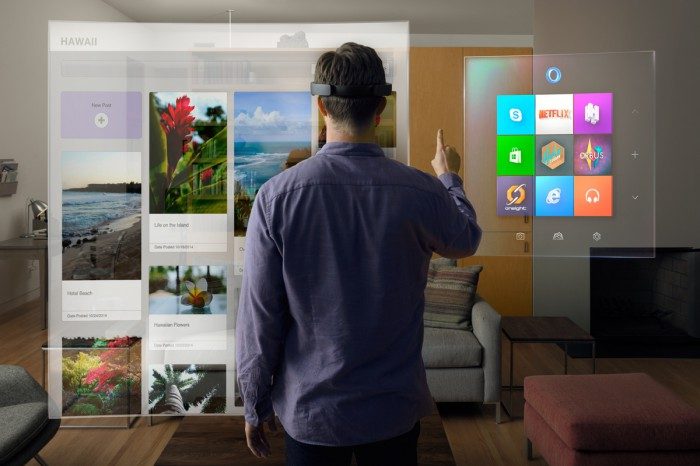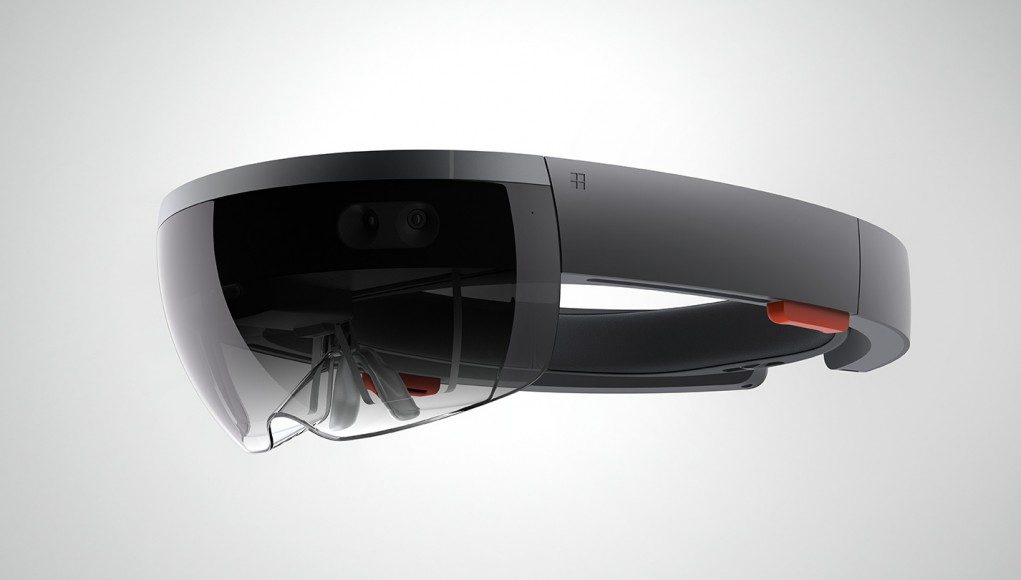Unfortunately no cameras or phones were allowed inside the press’ special hands-on meeting with Microsoft HoloLens after the device’s announcement on Wednesday, so we can’t show you a single picture of the only verifiably working model of the new augmented reality headset. We do however have some first-hand accounts from the lucky few allowed into Microsoft’s Redmond, Washington headquarters for the meeting, who then got a little one-on-one time with a HoloLens prototype. The device has garnered a collective ‘the potential is awesome, but still needs some work’ vibe.
See Also: ‘Microsoft HoloLens’ Revealed, an Untethered See-through AR Headset
Journalists were treated to three different demos of the HoloLens prototype, which included a Skype chat, an educational visit to Mars, and a modified version of Minecraft where the usual meter-high blocks were reduced to the size of Legos. A fourth application gave a look at HoloStudio, a 3D object building app that would let you use a combination of voice commands and hand gestures to make a 3D-printable model, but was demonstrated for the group by a Microsoft employee likely due to the unfinished nature of the program.
Naturally our fellow press-geeks had something to say about the fit and finish of the AR prototype itself, addressing the sort of technical hang-ups that could potentially break the new experience of interacting with objects that aren’t really there. Of course this is something Microsoft will have to iron out before they release the consumer version to the masses, but it’s important to keep in mind that the device in question is still an early prototype—more of a ‘working proof of concept’ than a reflection of the final product, which will likely go through a few stages of ergonomic testing and redesign.
Ben Gilbert from Engadget thinks “the resolution is sharp but the field of view is extremely limited.” Disregarding any current physical limitations of the prototype though, Gilbert maintains that “what you do in the headset is impressive,” and that HoloLens offers “an experience full of potential.”
We asked Gilbert for more thoughts on his experience with HoloLens. He noted that the limited field of view meant that you had to look around to reveal the augmented world around you:
The field of view on HoloLens is it’s biggest limitation: you are essentially looking through a window with HoloLens. What you see through that window is incredibly impressive—real-time markups of your reality, or a flexible computing interface that maps to the world around you, or, say, Mars. But wearing that headset solely for a windowed view of that alternate “mixed” reality is extremely limiting, and means far more head movement than you’d normally make. I was incredibly impressed by the effect of HoloLens, but the consumer reality needs to encompass your entire field of view, using both peripheral and focused vision.

Sean Hollister from Gizmodo concludes that HoloLens was “one of the most amazing and tantalizing experiences I’ve ever had with a piece of technology,” but like many other, still has a major gripe with the field of view, calling it “tiny” and “tunnel-vision-narrow.”
Wes Fenlon from PC Gamer reports the field of view of the see-through lenses as “disappointingly limiting” and “not immersive at all.” The end of the Minecraft demo struck a chord with Fenlon though, as “the best part of the demo was… when the Microsoft rep encouraged me to dig through a wall and reveal that I could see through it. It made me want to walk through the wall to see more of the cave I’d just uncovered.”
Peter Bright from Ars Technica raises another concern all too common to users of full-face VR/AR headsets, citing that it “didn’t really fit on or around my glasses, making them uncomfortable to boot,” an issue that smaller form factor devices, like the now discontinued Google Glass ‘Explorer Edition’, just don’t have a problem with. Custom-made prescription clip-on lenses anyone? Nope. We didn’t think so either.
See Also: Microsoft – “All Windows Universal Apps Work as Holograms”
Despite the minor discomfort, Bright says that the Mission to Mars demo “reinforced just how immersive this kind of augmented reality can be; the Martian imagery obliterated most of the room I was in, except for a computer workstation.”







